Land Invertebrates
Media
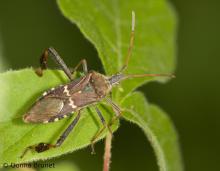
Species Types
Scientific Name
Nearly 90 species in North America north of Mexico
Description
Leaf-footed bugs are a large family of true bugs that are named for the flattened, leaflike extensions that many have on their hind legs. They fly well, and many smell bad when handled. Squash bugs are a famous member of this group.
Media

Species Types
Scientific Name
Harmonia axyridis
Description
The multicolored Asian lady beetle was imported to America to help control aphids. It is now well established and has become a nuisance, especially in fall when large numbers of them enter homes for shelter.
Media
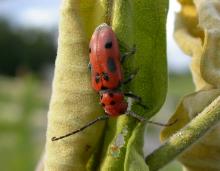
Species Types
Scientific Name
About 1,000 species in North America north of Mexico
Description
Longhorned beetles are elongated and cylindrical, with antennae that are at least half the length of the body — sometimes much longer. The larvae are grubs that bore in wood or other plants. Some are serious pests.
Media
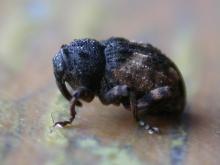
Species Types
Scientific Name
About 2,500 species in North America north of Mexico
Description
Weevils are plant-eating beetles with a characteristic long, down-curving snout. The antennae are clubbed and elbowed. There are thousands of weevil species.
Media
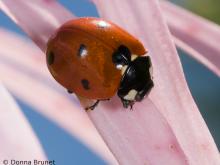
Species Types
Scientific Name
Nearly 500 species in North America north of Mexico
Description
Lady beetles are beloved for many reasons. Farmers like the way they devour injurious aphids and scale insects. Everyone else appreciates their bright colors and shiny, compact bodies.
Media
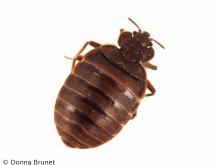
Species Types
Scientific Name
Cimex lectularius
Description
Humans and bed bugs have known each other for millennia. In the last century, pesticide use made these parasites rare in our country. But they’re growing more common now. Learn about them.
Media

Species Types
Scientific Name
About 60 species in North America north of Mexico
Description
The nymphs of spittlebugs and froghoppers are famous for hiding in small foamy masses of fluid. The “spit” conceals them as they suck juices from plant stems. The adults resemble leafhoppers.
Media

Species Types
Scientific Name
Scutigera coleoptrata
Description
Exceedingly fast, with zillions of wiggly legs! House centipedes seem that way. We usually see them in houses, where they prey on all the other insects and spiders you don't want around.
Media

Species Types
Scientific Name
More than 400 species in North America north of Mexico
Description
The name is a warning: blister beetles are famous for their chemical defenses. Beetles in this family can exude an oil that can cause a person’s skin to blister.
Media

Species Types
Scientific Name
Tabanus, Chrysops, and related genera
Description
Meet the horse fly: Stealthily, one will land on your back, slice your skin, and lap your blood. By the time it starts to hurt and you swat at it, the painful, itchy welt is rising.
See Also



Media

Species Types
Scientific Name
Cisseps fulvicollis
Description
The yellow-collared scape moth is more often “orange-collared.” And whether you think it looks more like a firefly or a wasp, it’s still a moth!
Media

Species Types
Scientific Name
Nearly 150 species in North America north of Mexico
Description
Slim, delicate plume moths are instantly recognizable by their T-shaped silhouette, long legs, and muted shades of tan and brown. It can be hard to separate the various species.
Media

Species Types
Scientific Name
Pyrrharctia isabella
Description
Not many people know the adult Isabella tiger moth when they see one, but we’re all acquainted with its caterpillar, the woolly worm, or woolly bear.
About Land Invertebrates in Missouri
Invertebrates are animals without backbones, including earthworms, slugs, snails, and arthropods. Arthropods—invertebrates with “jointed legs” — are a group of invertebrates that includes crayfish, shrimp, millipedes, centipedes, mites, spiders, and insects. There may be as many as 10 million species of insects alive on earth today, and they probably constitute more than 90 percent all animal species.





















